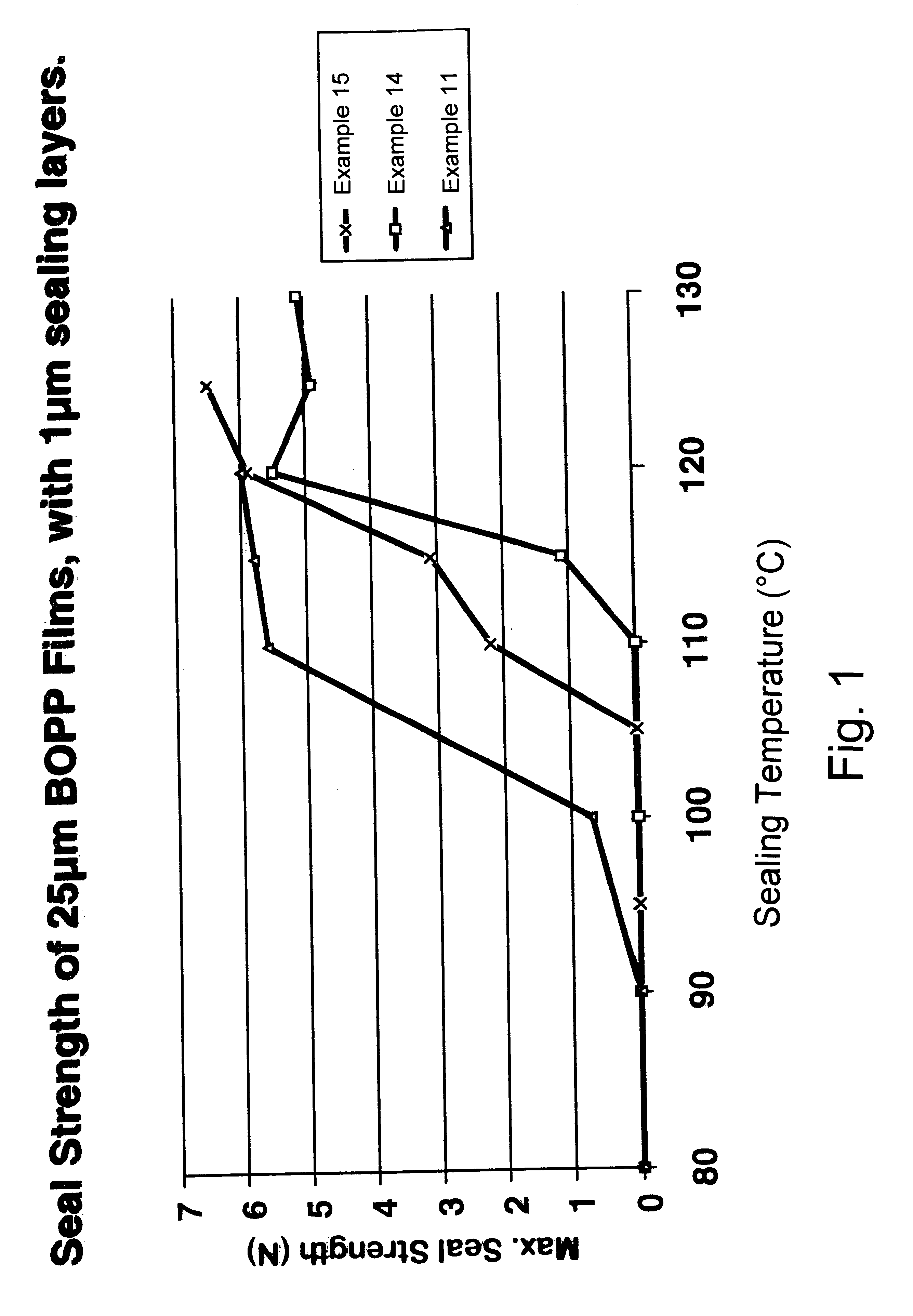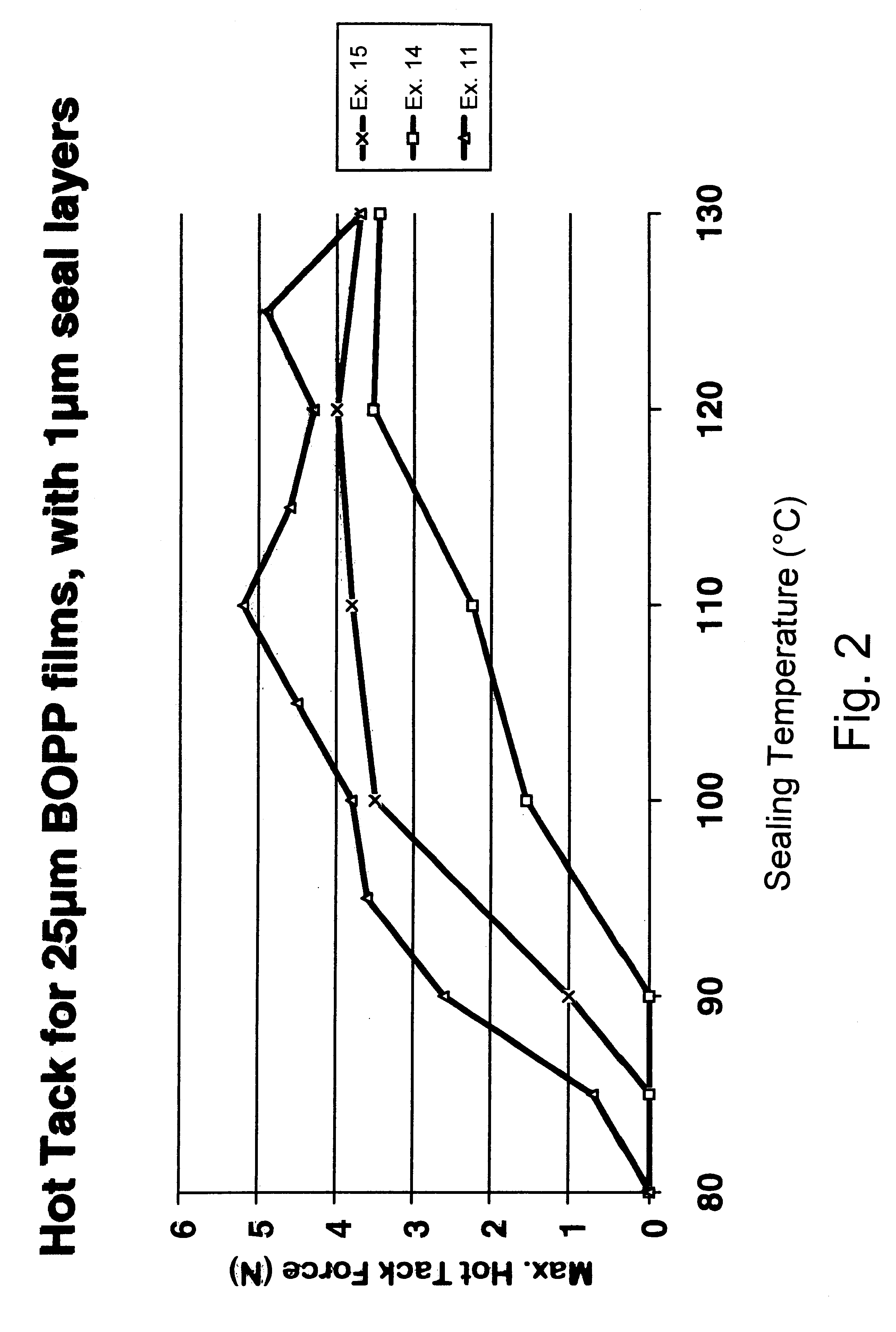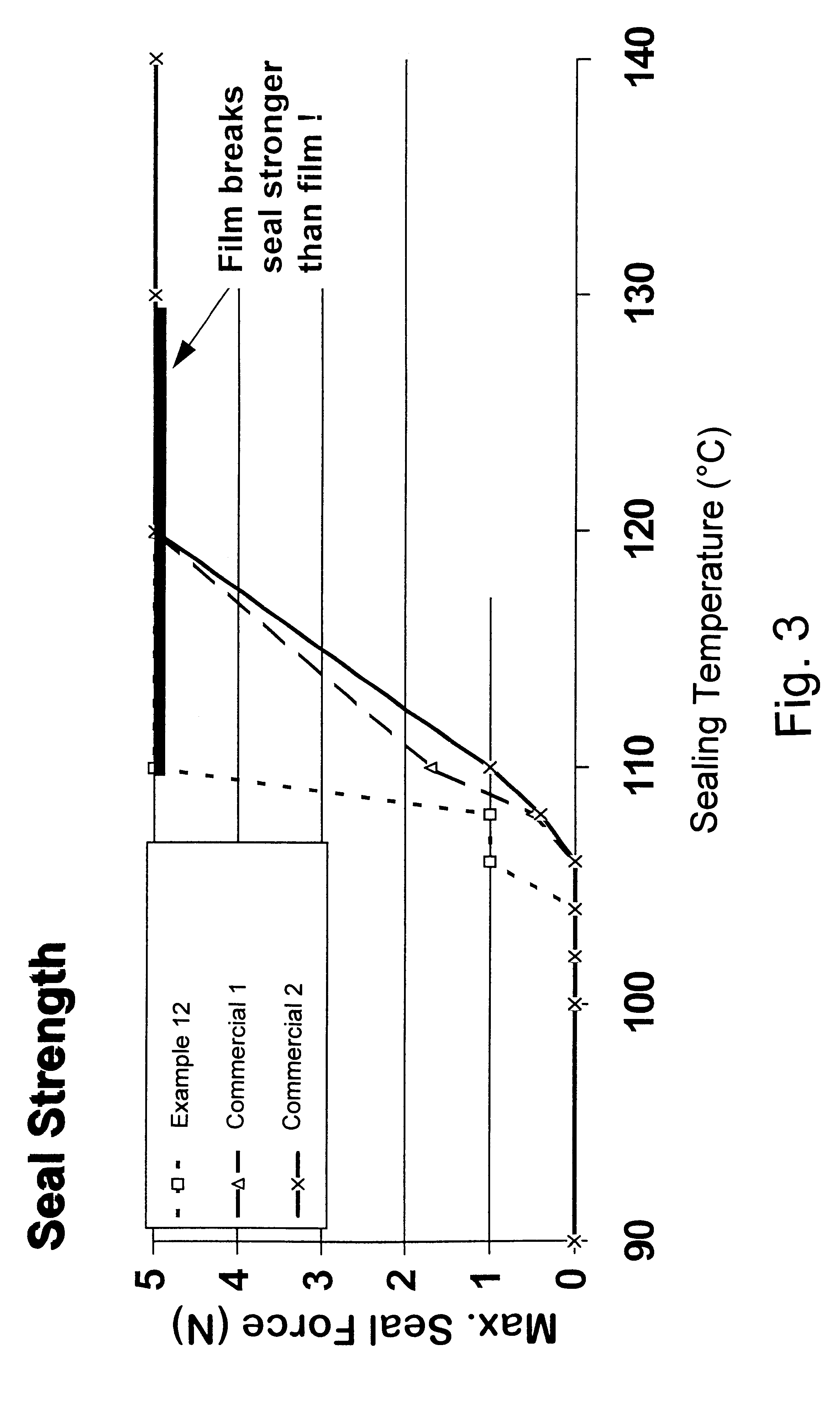Process for the production of propylene terpolymers
- Summary
- Abstract
- Description
- Claims
- Application Information
AI Technical Summary
Benefits of technology
Problems solved by technology
Method used
Image
Examples
examples
A combination of a loop reactor and a gas phase reactor was used for producing propylene terpolymers for film. The following characterisation methods were used in testing the polymers produced:
Melt flow rates were measures with the load of 2.16 kg and at 230.degree. C. according to ISO 1133.
Comonomer contents (ethylene and butene) were measured with Fourier transform infrared spectroscopy (FITR) calibrated with NMR.
Randomness (ethylene distribution) was measured with Fourier transform infrared spectroscopy (FTIR) calibrated with NMR.
Hexane solubles is a measure, determined at 50.degree. C. and 2 h, of the low molecular mass species in the polymer and they were determined according to FDA 21 LFR. Ch. 1(4-1-92 Ed.).
Melting temperature (peak temperature) was measured with differential scanning calorimetry (DSC) by using a temperature increasing rate of 10.degree. C. / min, according to ISO / DIS 11357-3v. Crystallinity, peak width, and fraction melting below a specified seal initiation tem...
examples 1 to 4
A combination of a pilot-scale loop reactor and a gas phase reactor was used to produce propylene terpolymers for films. Propylene, ethylene, butene and hydrogen were fed into the loop reactor. The polymerization temperature was 60.degree. C. in both reactors. The pressure in the loop reactor was 35 bar and in the gas phase reactor 15 bar. The catalyst used was a prepolymerized catalyst prepared according to EP 045975 and EP 84672, and the activity of the catalyst was 35 kg PP / g cat h.
The polymer produced along with unreacted monomers was flashed straight into the gas phase reactor and polymerization was completed therein.
example 5
The polymerization was carried out as in Examples 1 to 4, but the gas phase reactor was operated at the pressure of 5 bar and at the temperature of 60.degree. C.
PUM
| Property | Measurement | Unit |
|---|---|---|
| Pressure | aaaaa | aaaaa |
| Pressure | aaaaa | aaaaa |
| Angle | aaaaa | aaaaa |
Abstract
Description
Claims
Application Information
 Login to View More
Login to View More - R&D
- Intellectual Property
- Life Sciences
- Materials
- Tech Scout
- Unparalleled Data Quality
- Higher Quality Content
- 60% Fewer Hallucinations
Browse by: Latest US Patents, China's latest patents, Technical Efficacy Thesaurus, Application Domain, Technology Topic, Popular Technical Reports.
© 2025 PatSnap. All rights reserved.Legal|Privacy policy|Modern Slavery Act Transparency Statement|Sitemap|About US| Contact US: help@patsnap.com



